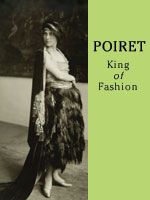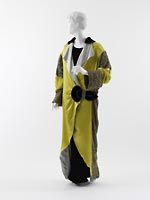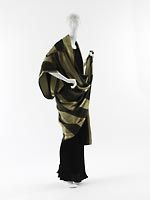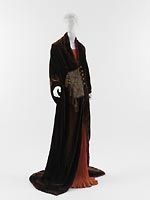 | The name of Paul Poiret (1879 - 1944) is without a doubt known by any fashion historian, as this French designer is still remembered at the "King of Fashion". His creations, although they caused a stir in the French and later European societies at that time, marked the freeing of women bodies from the suffocating conventions, mainly abandoning corsets and giving them the freedom to move in the outrageous pantaloons. |
His personality is evoked at the Metropolitan Museum of Art in New York in the exhibition "Poiret : King of Fashion", an impressive event that presents not only some of his best creations, many of the exhibits being the original ones, but also the biography, ideas and principles that inspired Poiret. His radical approach, following the curves of the female bodies, forever changed the world of fashion, in an original and ingenious way, as the designer was also influenced by major art movements at the beginning of the 20th century, such as Cubism or Symbolism, but also by Classicism, Primitivism and even Orientalism.
 |  |  |
Passionate about offering women the freedom of choice and the freedom to be elegant and to feel good and comfortable, Poiret launched models such as the "hobble" skirts or the "lampshade" tunics. He was also the "apostle" of a new way of dressmaking, favouring straight lines and designs made of rectangles. His modernity is expressed mainly by this simple and restricted lines. His main source of inspiration and muse was his wife, Denise, who would later become a prototype of la garconne. A beautiful, slender and gentle woman, she would be the model for all of Poiret's creations and a model for women world wide.
The curators of the MET exhibition have chosen 50 ensembles, in order for the audience to be able to see the distinct models, collections and ideas that atracted Poiret. Most of these have never before been exhibited in public, as some were made solely for Denise and never sold. Also, the event will bring to light the collaborations between Poiret and other artists of his time, such as Paul Iribe, Georges Lepape or George Barbier. Several vignettes from these artists, depicting Poiret's designs and published in fashion magazines such as Art, Gout et Beaute are also on display.
Photo : metmuseum.org
2007-07-03

































